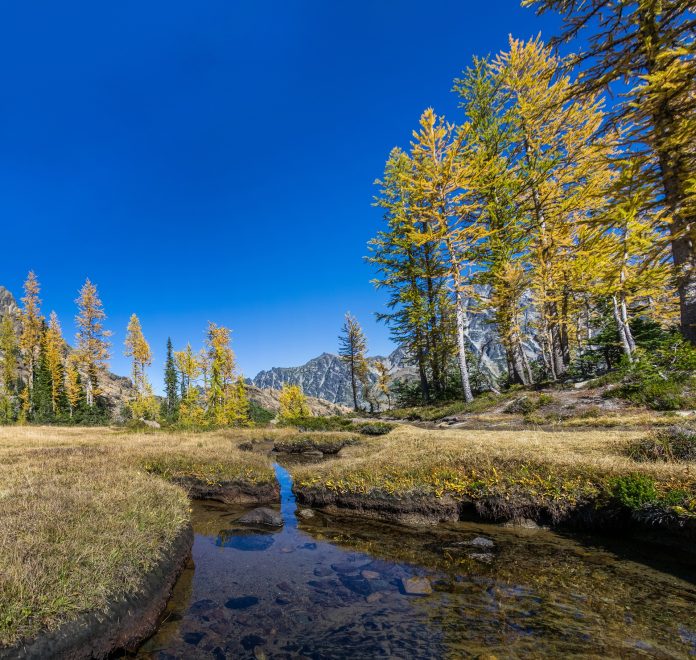Snohomish County Reconsiders Developing Channel Migration Zones
The Growth Management Act, including the Shoreline Master Program, touches many different land use issues in many different parts of the state. Futurewise works with local partners across Washington who keep us informed of local GMA issues that need our attention. Recently the Pilchuck Audubon Society, active in Snohomish County, alerted us to proposed changes from the Snohomish Planning Commission that would change development regulations around channel migration zones.
What’s a channel migration zone you might ask? Channel migration zones are important salmon and wildlife habitats. According to the Department of Ecology: “Channel migration zones are areas in a floodplain where a stream or river channel can be expected to move naturally over time in response to gravity and topography.” A 2018 peer-reviewed study concluded that the habitats in flood plains and channel migration zones are important Chinook salmon habitat and are strongly correlated with subyearling Chinook productivity for Puget Sound populations. Preserving Chinook salmon habitat is crucial as well to protecting our southern resident orca whales who rely on Chinook salmon as a primary food source.
At the same time, channel migration zones are hazardous for buildings and improvements. According to Snohomish County, rivers in the County experience channel migration that damages and destroys homes and property.” That is why Snohomish County currently prohibits most development in channel migration zones and The Snohomish County Hazard Mitigation Plan Volume 1: Risk Assessment calls on the county to “[d]iscourage new development and increased densities, both public and private, within channel migration zones … wherever feasible.”
Despite the impacts on salmon runs and the risks to building and improvements, recently Snohomish County proposed allowing parks, campgrounds, and other public uses in channel migration zones throughout unincorporated Snohomish County. The impetus for this amendment was a desire from the Oso community to create a memorial for the 2014 Oso mudslide. However, the amendment would have applied to channel migration zones across the county. (In related news, Futurewise appealed Snohomish County’s landslide hazard protections and we will have our first oral argument for that appeal on June 12th).
The Snohomish County Planning Commission voted 5-2 to support these amendments while Futurewise, the Pilchuck Audubon Society, the Tulalip Tribes, and members of the public opposed these amendments. Futurewise submitted a comment letter pushing back on the county’s decision given the need to protect salmon habitats created by channel migration.
However, since the Planning Commission needs six votes to forward a recommendation, the recommendation did not move forward to the County Council. In response to comments from Futurewise, the Pilchuck Audubon Society, the Tulalip Tribes and the public, the county staff is now reconsidering these changes. We’ll keep you posted if there are further opportunities to submit public comment on these amendments.
Futurewise Settlement with Benton County Protects Water Resources, Plans for Wildfires
Futurewise reached a settlement agreement with Benton County that will safeguard water resources, plan for improved state highway and transit service, and for adequate wildfire fighting capabilities within Benton County.
For over a year, Futurewise and Benton County have jointly worked to strengthen Benton County’s comprehensive plan update, which was appealed by Futurewise in early 2018. The resulting settlement agreement includes three key updates to safeguard water resources in the county, including:
- Adopting a water mitigation program for new rural development in the Yakima basin. Water used by new rural residences will be offset with senior water rights purchased by the county, allowing the water to stay in the mainstem of the Yakima River;
- Limiting new rural residential impervious surfaces that are not infiltrated on-site to no more than ten percent; and
- Requiring the retention of 45% of the existing vegetative cover – including native or non-native species – with the goal of improving the quality of stormwater runoff within rural residential zones.
Under the agreement, the County will also analyze the impact of planned growth on the state highway system and transit services, and identify the facilities and services needed to serve that growth, with the goal of improving capital facility planning efforts with state and regional transit partners.
Lastly, the County will conduct an analysis of the adequacy of county-wide firefighting capabilities and consider amendments to their capital facilities plan that may be needed to maintain those capabilities with the rural areas of the county – particularly those areas on the border of the Urban Growth Area that can be a long distance from services.
King County Continues Community Engagement on Skyway Subarea Plan
In our January Wonkabout Washington column, we gave you a preview into the King County subarea planning process for the Skyway-West Hill neighborhood. Since January, King County has hosted five focus group sessions, including a session on March 28th attended by 9 youths from Skyway Advocates for Youth (SWAY), a partnership between Futurewise and Skyway Solutions. In addition to SWAY attendees, the focus group was also attended by residents of a mobile home park on Martin Luther King Jr. Way, staff from Urban Family and Somali Youth & Family club members.
The March focus group was held at the Creston Point apartments, focusing on residents living along Martin Luther King, Jr. Way/SR 900 and what kinds of development residents would like to see on that corridor. Though the focus on the meeting was on development, the SWAY participants also shared their concerns about pedestrian safety on MLK Way, with a focus on a need for crosswalks and street lights to improve the pedestrian experience.
In May, King County will host another community forum to share feedback from these focus groups and discuss draft amendments to the Skyway-West Hill Subarea Plan. Community input at that meeting will inform revisions to the proposed land use and zoning amendments to the plan. King County plans to release a draft of the subarea plan this summer, followed by a 30-day comment period and another community forum to gather feedback. Then a final draft of the subarea plan will head to the King County Council by September 30th as part of the proposed 2020 update to the King County Comprehensive Plan. We expect the council to adopt the subarea plan by June 2020.
Futurewise works throughout Washington State to encourage healthy, equitable, and opportunity-rich communities and to protect our most valuable farmlands, forests and water resources through wise land use policies and practices. Founded to help support implementation of the first-in-the-nation Growth Management Act, we focus on directing equitable growth into our urbanized areas and preventing the conversion of wildlife habitat, open space, farmland, and working forests to subdivisions and development.


